Milan is reborn every morning, pulsated like a heart. Milan is positive, optimistic, efficient. Milan is to live, dream and enjoy. Milan to drink.
You can look for Milan in the words of Navigli poet Alda Merini, in the intense notes of Diva Maria Callas or in the sad story of Virginia de Leyva, made famous by Manzoni as the Monaca di Monza. You can find it in the marble of the Duomo silhouetted against the sky, in the glittering shop windows of the Quadrilatero della Moda or in the reflections of the water flowing in the Navigli. However, the best way to discover Milan is to immerse yourself in its essence, to walk along its streets, talk to its inhabitants and let yourself be carried away in that mad whirlwind of life that has made it famous throughout the world. Between ancient stories and futuristic projects, art and design, tradition and modernity, Milan is a city that never ceases to surprise. In this article, we take you on a tour of Milan's 20 unmissable attractions for a unique, authentic and unforgettable experience.
Visit Milan attractionsRenzo climbed up the slopes to the top and once there he saw the Cathedral, a Big Machine alone onto the plain, like something rising more from a desert than inside a town; so he stopped at once, forgiving all his troubles, to gaze from afar at that Eighth Wonder of which he knew since his childhood."
20. The Duomo cathedral, the symbol of the city
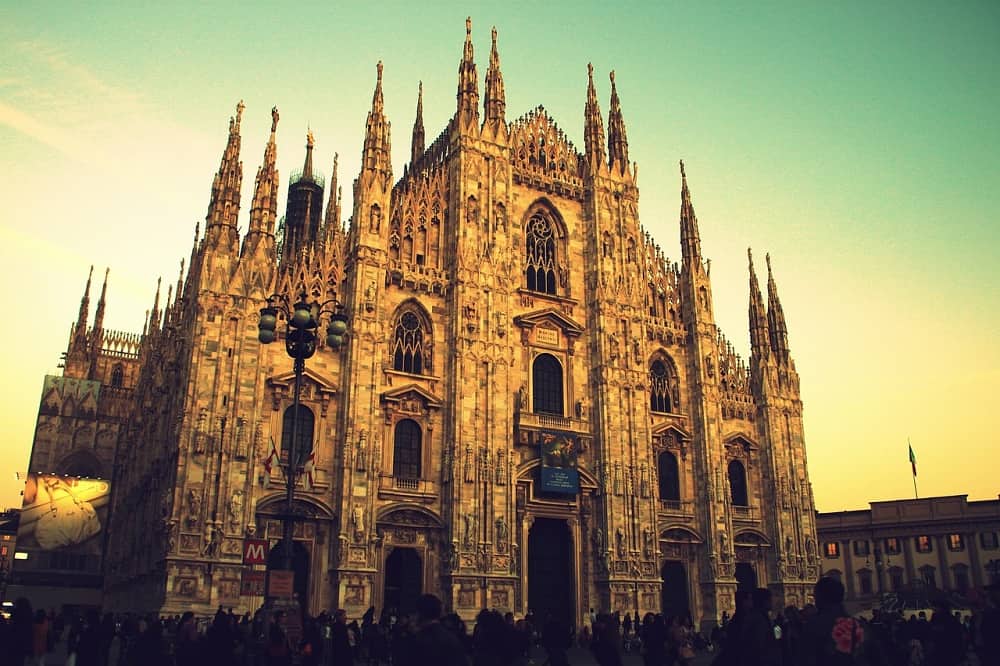
Every European capital has an architectural jewel that represents it, Paris has the Eiffel Tower, London the Big Bang, and Athens the Parthenon... Milan boasts the Duomo. It is an imposing Gothic cathedral built with white and pink marble brought from Lake Maggiore through a dense network of river channels constructed specifically for this purpose; a building studded with spires, statues, arches and gargoyles that will leave you speechless!
And up there, on the top of the cathedral, stands the "Madonnina", a golden statue representing the Virgin Mary that for centuries has shone in the sky of Milan, protecting the city and all its inhabitants.
Piazza Duomo
Visit the Duomo of Milan19. Sforza Castle, the residence of the dukes

It was Francesco Sforza, the first Duke of Milan, who built this imposing fortress, which was always a symbol of the power of medieval Milan. Between 1500 AD and 1600 AD it was transformed into a real military citadel and then became, at the beginning of the last century, the seat of cultural institutions. Today you can admire inside of the castle the Filarete tower, the highest, the rear facade that overlooks Parco Sempione, the Ponticella (old bridge) of Ludovico il Moro that connected the ducal apartments to the outer walls, the parade ground, the Rocchetta that is the most impregnable area of the fortress and the Ducal Court. In addition to the architectural wonders in the Castello Sforzesco you will also find several exhibitions and displays of considerable artistic interest.
Piazza Castello, 20121 Milan MI
Visit the Castello Sforzesco and surroundings18. Quadrilatero della moda, elegance in the shop window
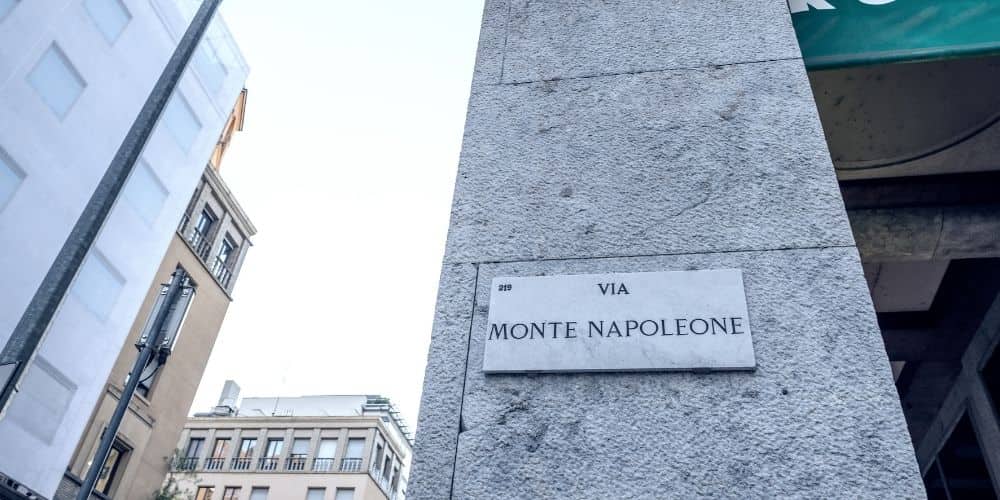
All over the world Milan is synonymous with high fashion and classy shopping. The main streets that make up this district in the heart of the city are Via Monte Napoleone, Via Manzoni, Via Della Spiga and Corso Venezia. During the whole year, from the store windows peep out clothing designed by the most important designers such as Armani, Versace and Prada. The shop windows and showrooms will conquer you and if you are lucky enough to stay in Milan during the two annual fashion weeks you can attend some of the 40 fashion shows that take place in the most elegant palaces of the city such as Palazzo Reale and Palazzo Serbelloni.
17. Navigli and Darsena, the aperitif hour
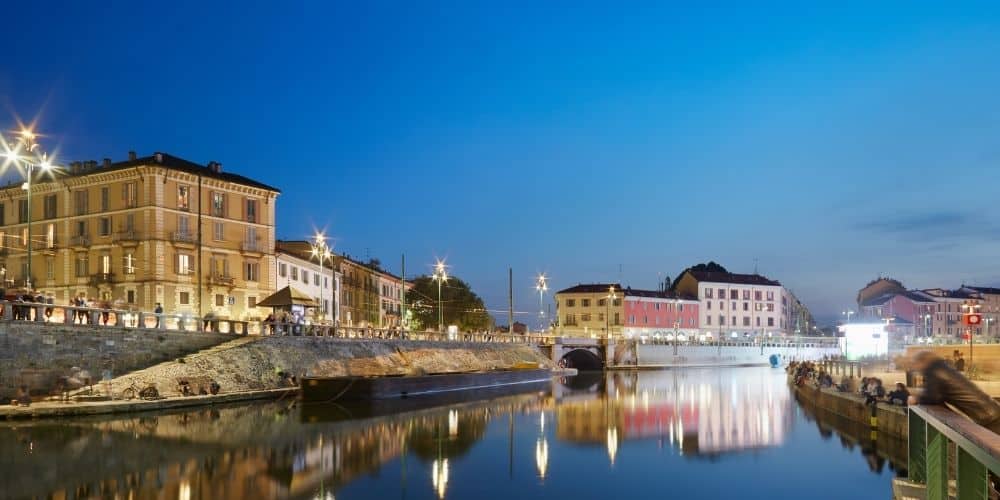
What makes Milan famous in the world besides fashion is the so-called "bella vita" (good life), the rooftop parties at sunset, the social events but above all the after-work aperitifs that the Milanese just can't give up. And what better place to taste an excellent prosecco than on "Navigli", the canals that has become the symbol of modern "Milan to drink", with its lounge bars overlooking the Naviglio Grande, the music that emanates from the inner rooms of the historic bars and the noisy chatter of the Milanese who relax after a day of business in the city. The Darsena in particular, inaugurated on the occasion of Expo 2015, is an inimitable place to enjoy the golden hour strolling with a spritz in hand illuminated by the colourful lights coming from the many dehors that crowd the banks of the canal.
Porta Ticinese
Enjoy an aperitif on a boat on the Navigli16. Teatro alla Scala, the temple of opera
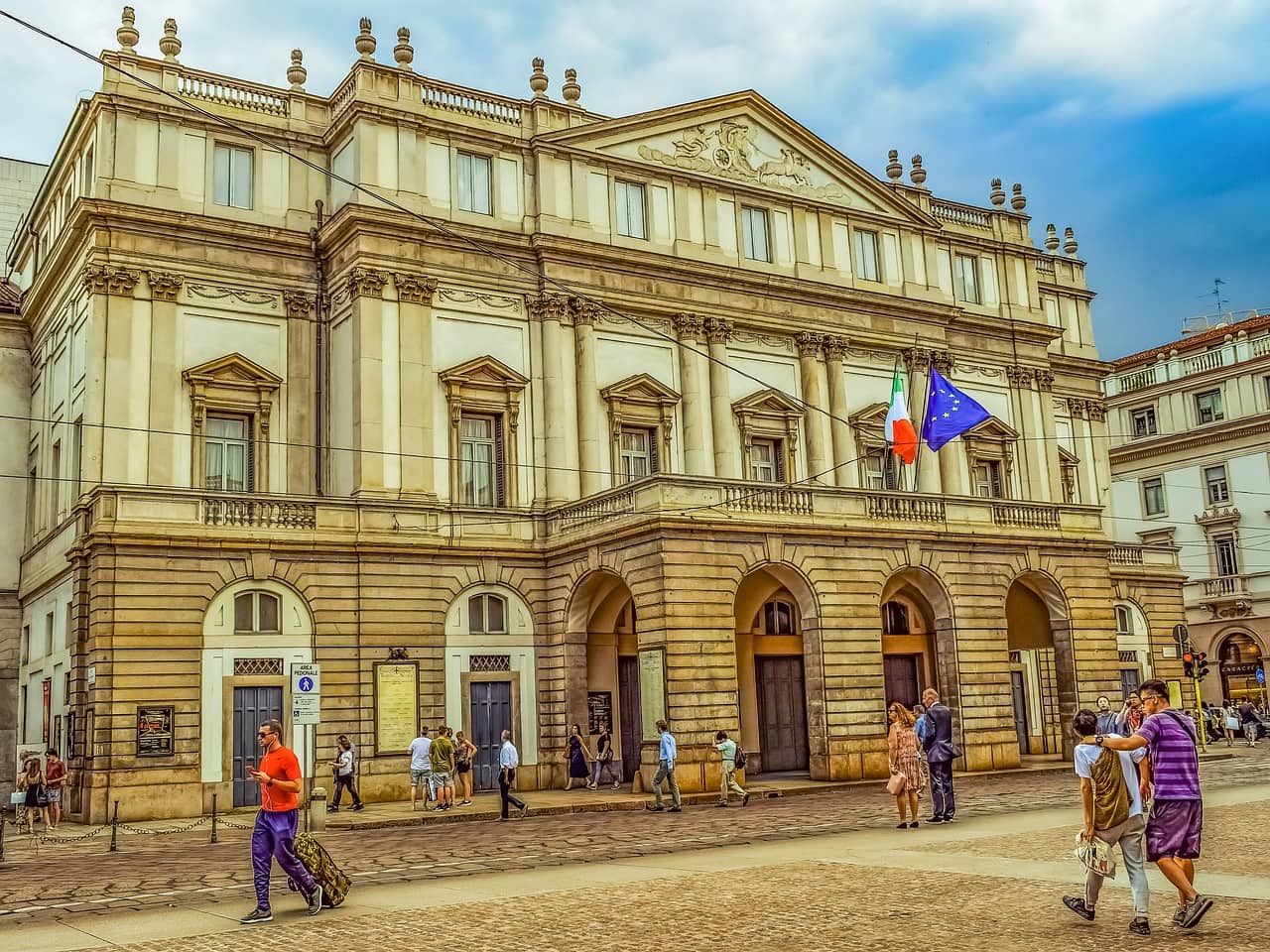
The Teatro alla Scala is more than a building; it is a dream, the dream of anyone who has ever wanted to tread the theatrical stage, perform in ballet or opera or even just attend unforgettable shows. Risen from the ashes of the ancient Teatro Ducale, La Scala was inaugurated in 1778 with the opera "L'Europa riconosciuta" by Salieri and was later made great by artists such as Donizetti, Verdi, Puccini, and many others.
With its neoclassical elegance and perfect acoustics, La Scala is a landmark for opera fans and an emblem of Italy's cultural heritage. In addition to opera and ballet performances, the theatre also hosts symphony concerts and chamber music performances, making it a centre for the promotion and dissemination of musical culture in all its forms. La Scala is an experience that goes beyond simply watching a performance: it is a journey through history, an encounter with absolute beauty, another unmissable attraction in Milan.
Via Filodrammatici, 2
Visit the Theatre alla Scala Museum15. Brera Art Gallery, a simulacrum of beauty
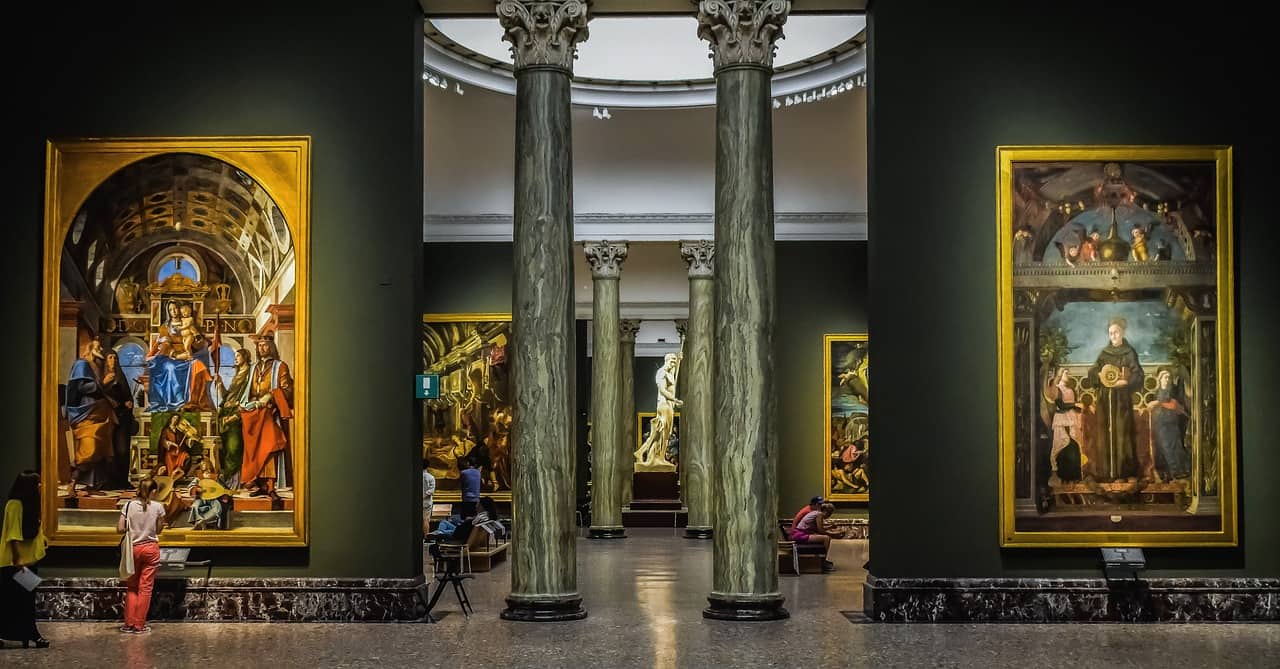
One of Italy's most unmissable art galleries, the Pinacoteca di Brera houses ancient and modern paintings. Unlike other Italian museums, the Pinacoteca is home to works from different artistic schools from Lombardy to Tuscany and Rome. This gallery was founded in the Napoleonic era precisely to represent every era and every region of Italy, a true tribute to Italian art in all its forms. Attempting to list the wonders inside the Pinacoteca exhaustively would be an impossible task, so we will mention only a few of the major names you will encounter in the magical palace of the Pinacoteca in Brera: Raphael, Bramante, Piero della Francesca, Nicolò Pisano, Perugino, Mantegna, Tintoretto and Caravaggio.
Finally, after admiring so much beauty, you can relax and chat in one of the art cafes that arise throughout the Brera area, making it one of the chicest neighbourhoods of Milan.
Via Brera, 28
Visit the Brera Art Gallery with a guided tour14. Galleria Vittorio Emanuele II, Milan's salotto buono

Just a short walk from the Duomo, don't miss Galleria Vittorio Emanuele II, a superb gallery that leads from the cathedral to La Scala Theatre. The gallery stands on top of ancient Milanese palaces and at its centre, you can admire the superb glass and iron dome. Galleria Vittorio Emanuele II is nicknamed by the Milanese "il salotto" (the living room) and hosts some of the most important and historic fashion showcases and luxury restaurants.
It is one of the must-see attractions in Milan and one of the earliest examples of a luxury shopping centre in the world. Built between 1865 and 1877, it connects Piazza del Duomo to Piazza della Scala and is a symbol of 19th-century architecture.
Piazza del Duomo
Visit the Galleria and the Terraces over the Duomo with a private tour13. Sempione Park and its legend
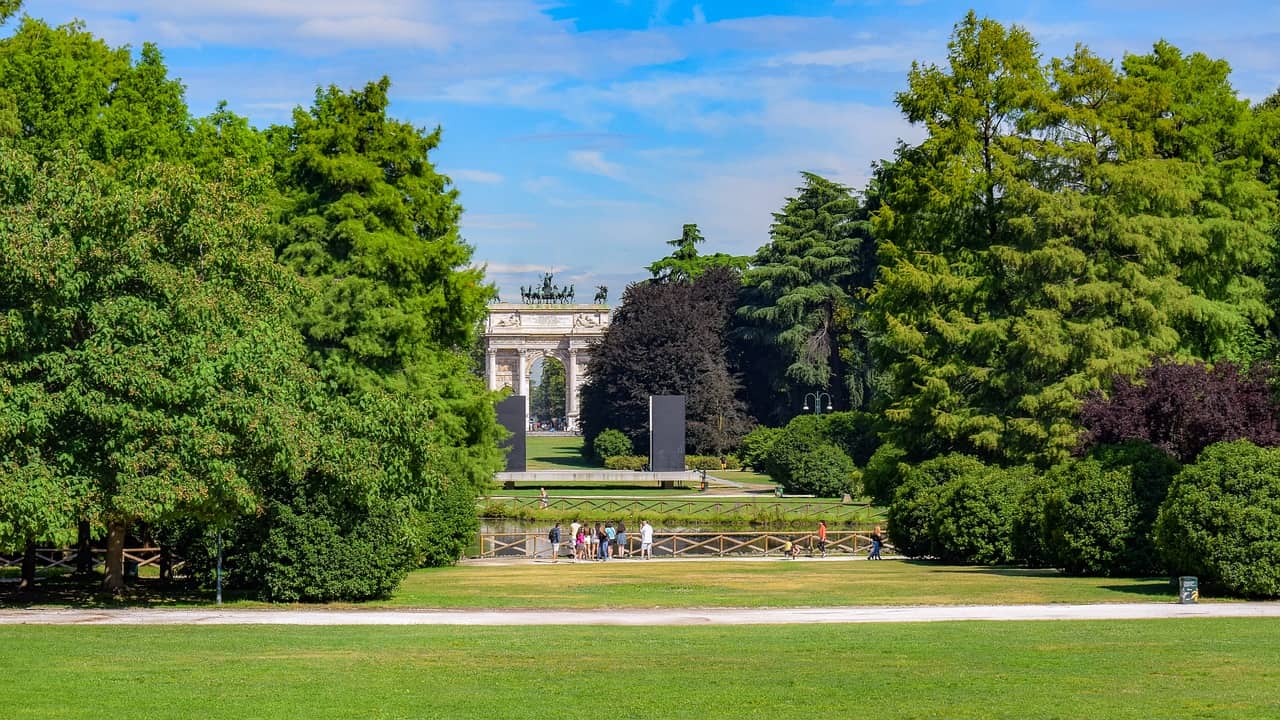
Parco Sempione is one of the most beautiful urban green areas; built towards the end of the 19th century, it overlooks the Castello Sforzesco. Legend has it that inside the park lives the so-called Black Lady who, during the foggy evenings, wanders around among the trees luring men, who perceive her presence thanks to an intense scent of violets. After having seduced them, the Black Lady leads them through the hidden paths of the park inside a large villa: there she consummates the intercourse, but as soon as the man lifts the veil that hides her face, he discovers a skull with empty eye sockets. At this point the Black Lady does not try to hold back the men who flee from her frightened, she knows well that they will return because they have incurred her curse, that is, they have been condemned to know a love so strong that they lose their senses and they will spend the rest of their lives trying to find the great villa where they had danced with the Dark Lady.
Sempione Square
12. The Monumental Cemetery of Milan: a journey through art and memory
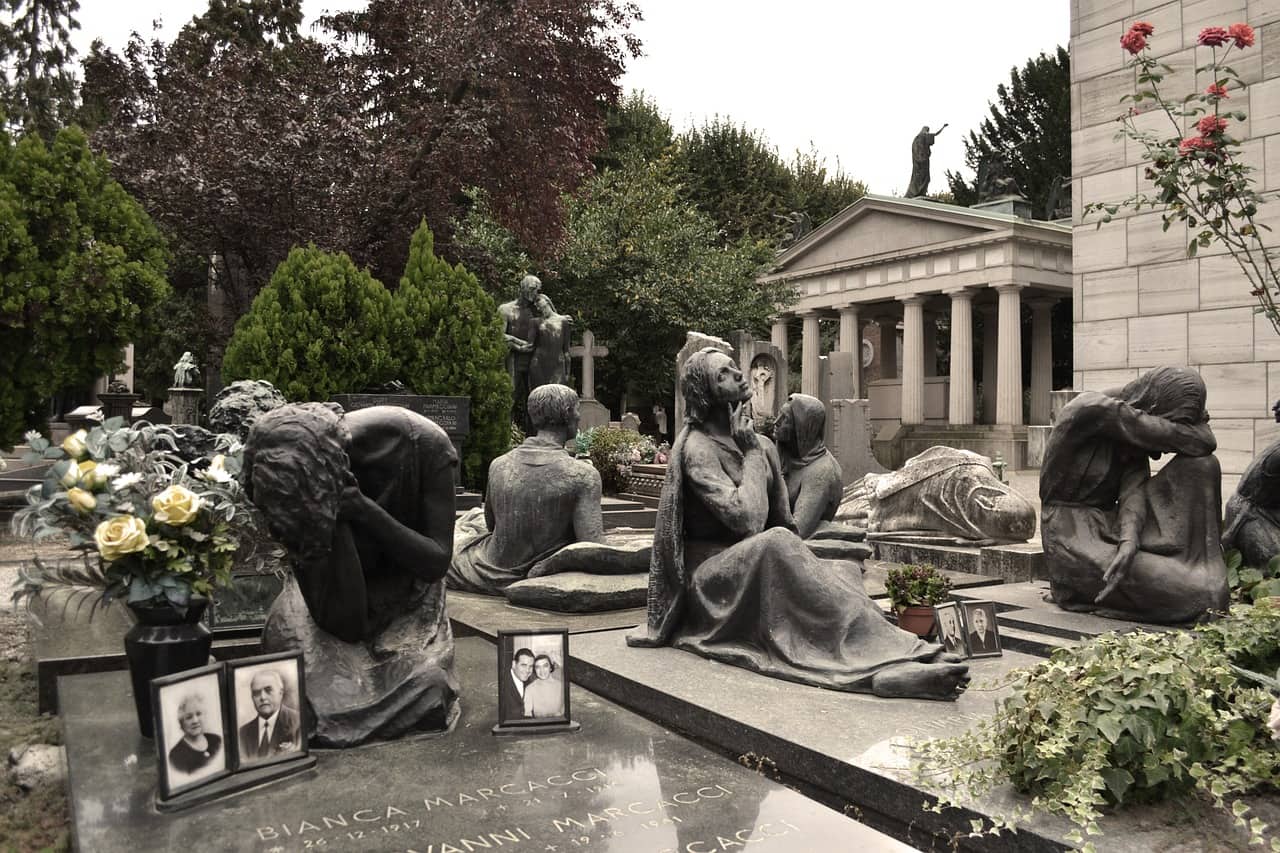
The monumental cemetery is one of Milan's most special attractions, a real open-air museum. It is a wonderful neo-Gothic building made of marble and bricks that houses the tombs of some of the city's most illustrious families and the remains of some VIPs, such as Alessandro Manzoni and Salvatore Quasimodo.
At 250,000 square metres, the cemetery contains examples of funerary art reflecting cultural changes from Romanticism to Art Nouveau to more modern expressions. Each monument tells a unique story.
The visit also includes the Crematorium Temple, a symbol of 19th-century positivism, and a tour of the graves of great industrial families, offering an extraordinary journey through the city's collective memory.
Piazzale Cimitero Monumentale
11. Vertical forest, a metropolitan reforestation project
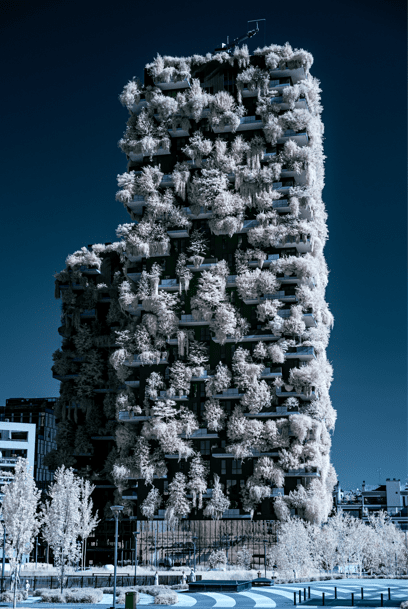
The Bosco Verticale (vertical wood) represents the true rebirth of Milan, the green face of the city in the new millennium. The Bosco Verticale, inaugurated in 2014, consists of two tower-shaped residential buildings located in the Isola district: these buildings are covered with as many as 15,000 plants of 90 different species, the equivalent of a small forest! It is fascinating to see the wonderful seasonal colours on the facades of the buildings, from the bright greens of spring to the warm tones of autumn. After admiring the beautiful vertical forest, I recommend a short walk to Piazza Gae Aulenti and Corso Como, to enjoy a classy aperitif in the shadow of the city's most famous skyscrapers.
Via Gaetano de Castillia, 11
10. Via Paolo Sarpi, Milan's chinatown
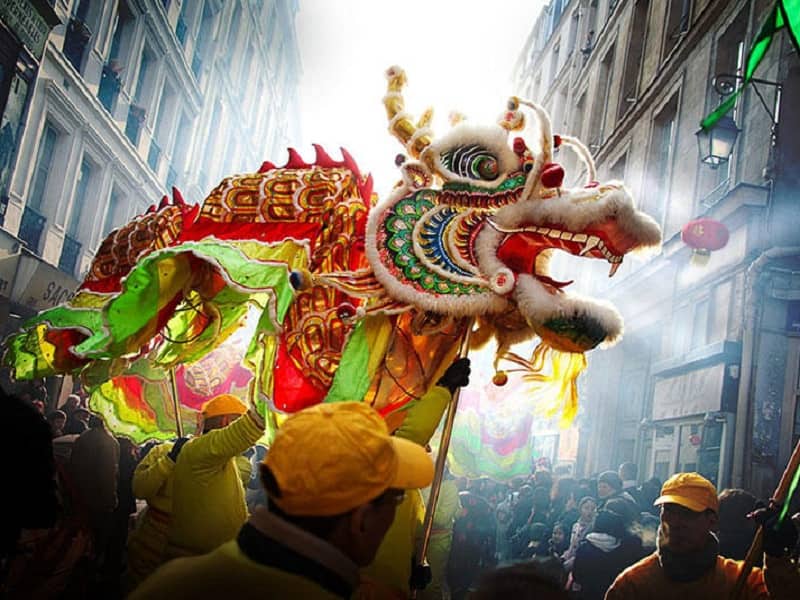
This neighbourhood, formerly known as Borgo degli Ortolani, has become in recent years a real Chinatown in the heart of Milan. Via Paolo Sarpi, the main artery, stretches for about a kilometre and is dotted with oriental stores, from clothing to markets, from bars to street food. The neighbourhood has recently been redeveloped and if you are lucky enough to be here during the Chinese New Year you can watch the colourful parade that fills the streets with oriental music and traditional costumes.
Via Paolo Sarpi
9. The Basilica of Saint Ambrose, the patron saint of Milan
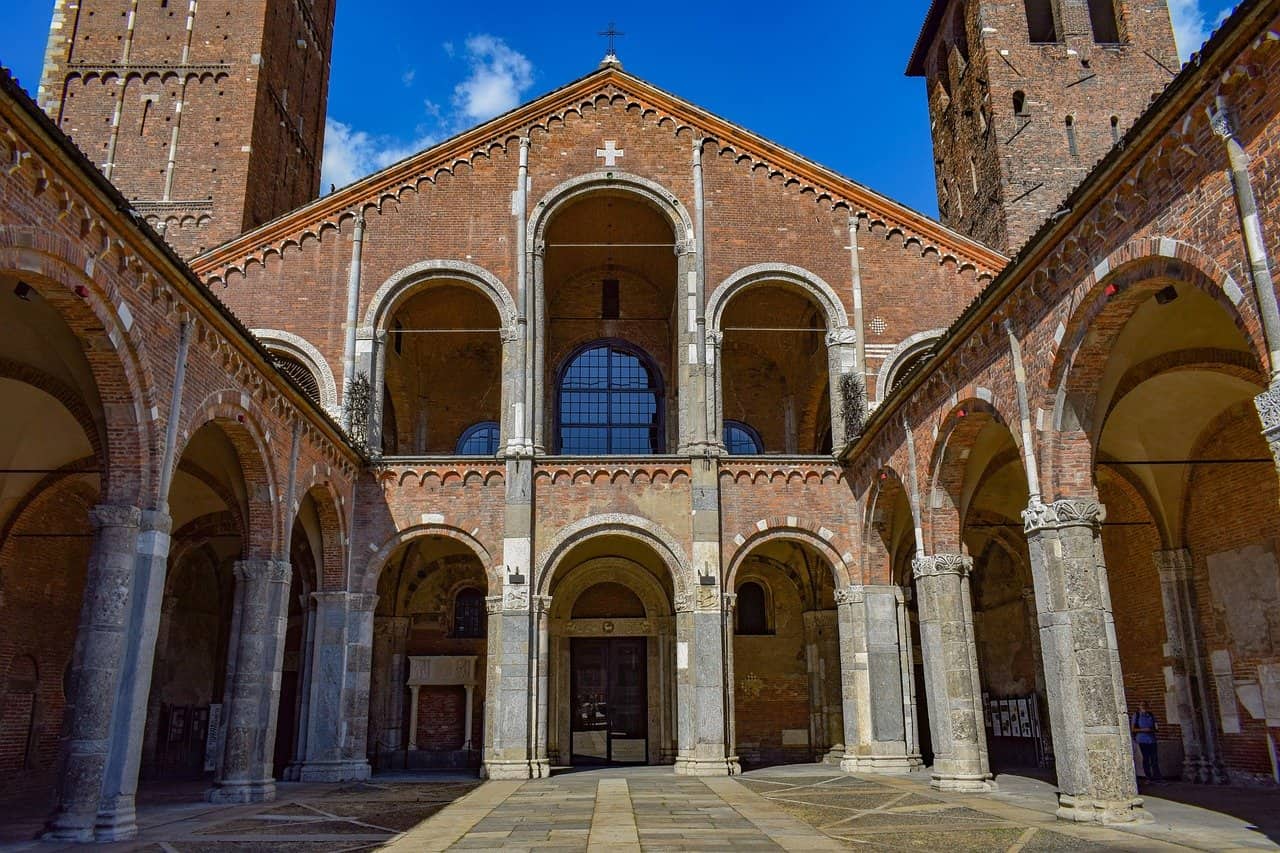
This ancient basilica takes its name from the city's patron saint and is a truly unmissable attraction during a tour of Milan. A first church dedicated to the saint was built on the same site in 386, the current basilica was completed in 1099. The exterior of the church is very particular with its arcades, arches and two bell towers: it is undoubtedly an artistic jewel little known to the crowds of tourists, but very dear to the locals. Inside you can admire the sarcophagus of Stilicone and the crypt where the Saints Ambrose, Gervasius and Protasius rest.
Piazza Sant'Ambrogio, 15
8. Idroscalo, the sea of Milan

Milan's Idroscalo (seaplane port) was established in the 1920s as an airfield on the water. Later, with the decline of seaplane transport, it became a centre for recreational activities and sports, especially on the water, so much so that it was named "The Sea of Milan". Today, at the Idroscalo in Milan, it is possible to enjoy many sporting activities such as rowing, sailing and kayaking, there are swimming pools and water games for children, but also temporary exhibitions, bars and a series of events for guests of all ages. In a city that is notoriously sea-less, this becomes an unmissable attraction.
Segrate
7. Metropolitan day hotel ‘Venezia

The “Hotel Day Venezia" is one of the best-preserved daytime baths in Italy. The underground structure in Art Deco style was inaugurated in 1926 to provide various services for citizens and travellers. Imagine that you have just arrived in the capital of Italy after a long journey on a steam train during a very hot summer at the beginning of the century: at the "Hotel Day Venezia" you would have had the prospect to fresh up with a luxury bath and take advantage of body care services such as manicure, barber, hairdresser, laundry; moreover, in this ante litteram commercial centre there were also travel agencies, photographers and many other services! Today the metropolitan "Hotel Day Venezia" can be visited by FAI guided tours.
Piazza Oberdan
6. San Bernardino of the Bones, the Cemetery of the Innocents
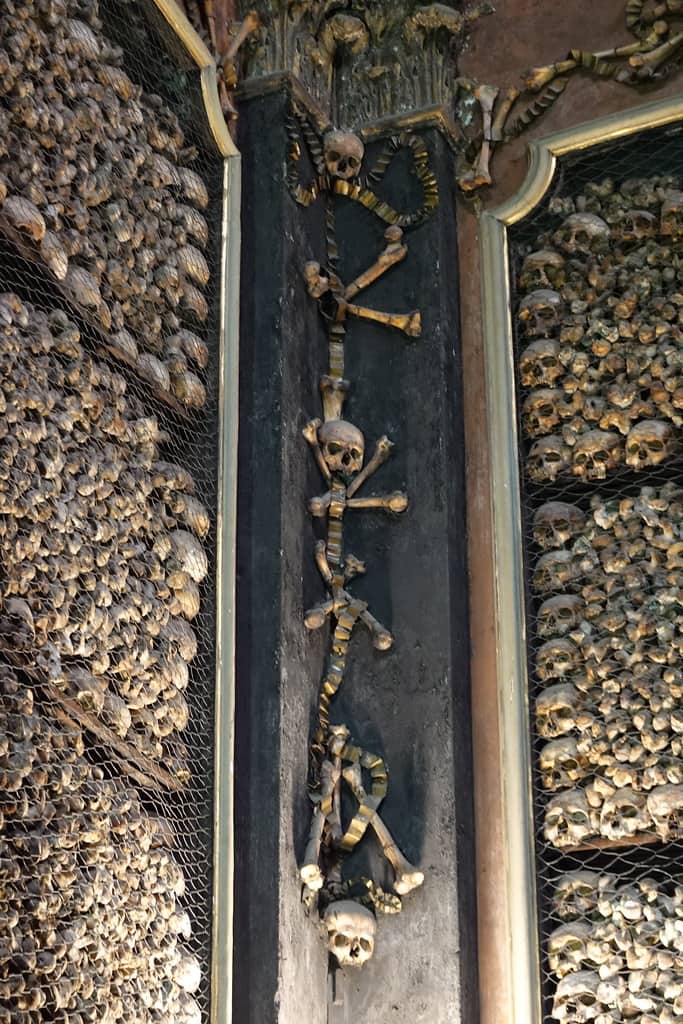
The chapel of San Bernardino alle Ossa will surely remind the Cemetery of the Innocents in Paris: is a sacred space occupied by thousands of skulls and bones that were recovered in the foundations of the church after the bell tower collapsed in 1964. The human remains were used to form an art work, macabre but at the same time suggestive, in rococò style. Legend has it that the bones of San Bernardino all belong to saints and martyrs, but more likely they are the remains of the dead from the nearby Ospedale Maggiore.
Piazza Santo Stefano
5. Pirelli Hangar Bicocca, urban art
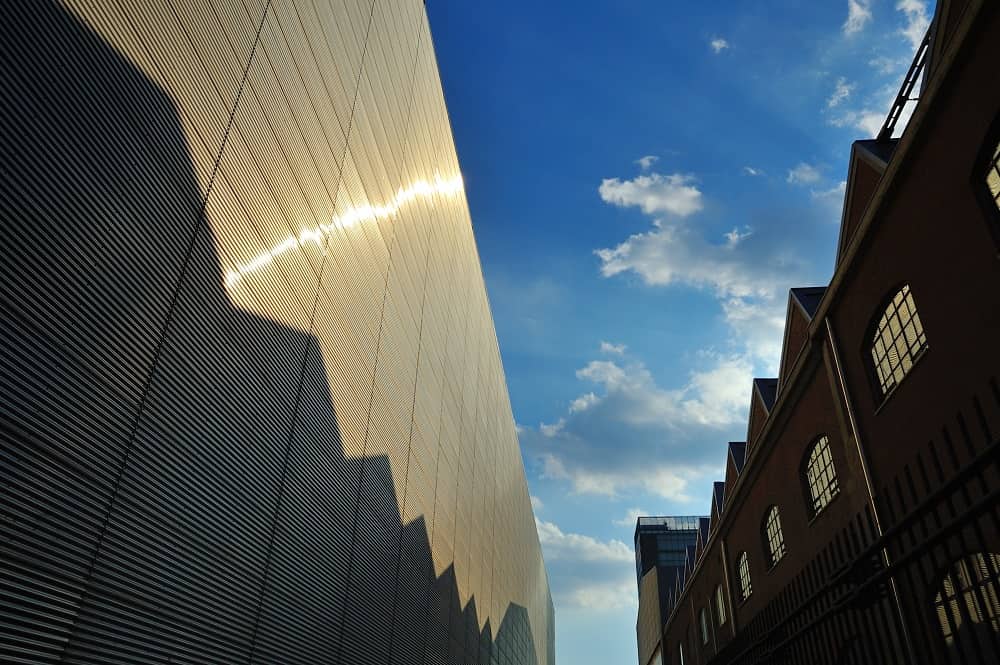
The Pirelli Hangar Bicocca is a free museum of contemporary art created after a major industrial redevelopment project that transformed spaces used for the production of agricultural vehicles, locomotives and large machines into a building with vast exhibition spaces. Do not miss the incredible installation The Seven Palaces that is located inside the structure called "The Cube" that pays homage to the ancient Hebrew treatise Sefer Hechalot, the Book of Palaces: the work symbolizes the spiritual path of approach to God.
Via Chiese, 2
4. Columns of San Lorenzo, the youth movida
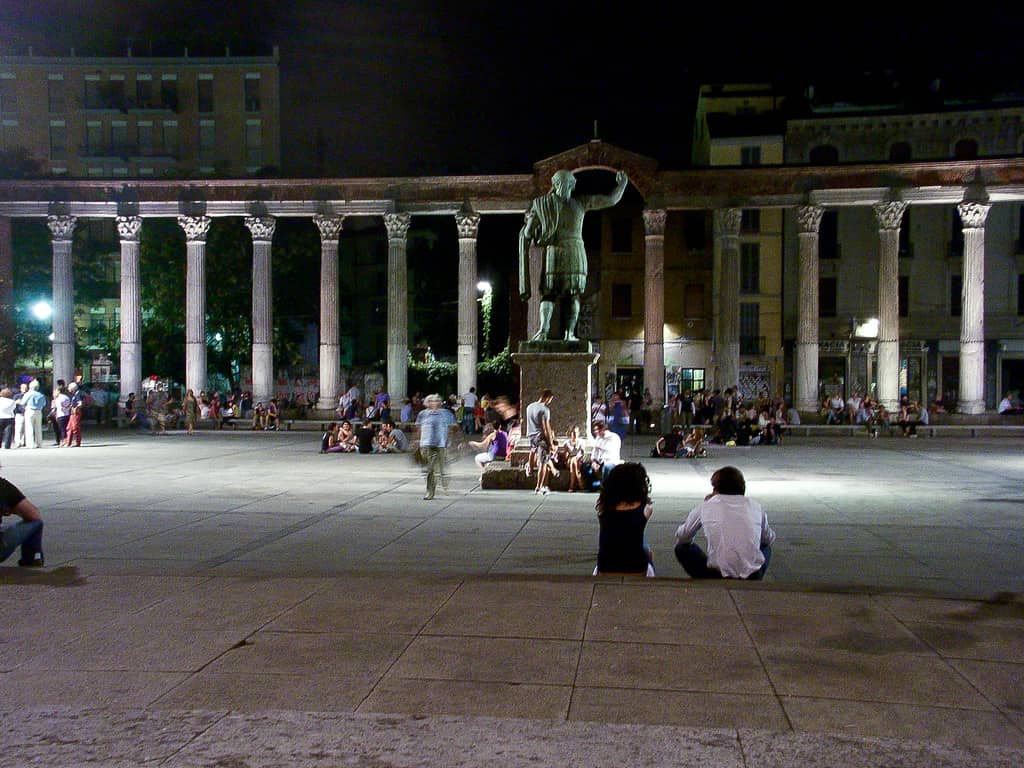
The columns of San Lorenzo are located at the Porta Ticinese district and they are what remains of a porticoed atrium placed in front of the homonymous basilica on the way to Pavia, the city of Ticino. Today, under the sixteen columns with Corinthian-style capitals, young people gather to spend their evenings drinking beer and listening to music all night long: here the youngest Milanese movida gathers.
Corso di Porta Ticinese
3. Bosco in città, nature in Milan for families

The Bosco in Città is a public park created in 1974 thanks to the collaboration of families in the neighbourhood, boy scouts, students and Milanese citizens who have worked together to create this green lung in the heart of Milan. Here you can enjoy pleasant walks through the woods, meadows, streams, ponds, wetlands, about 200 gardens assigned to citizens who cultivate them with great love.
Via Novara, South Agricultural Park
2. Montanelli Gardens and Corso Buenos Aires, Milan's fifth avenue
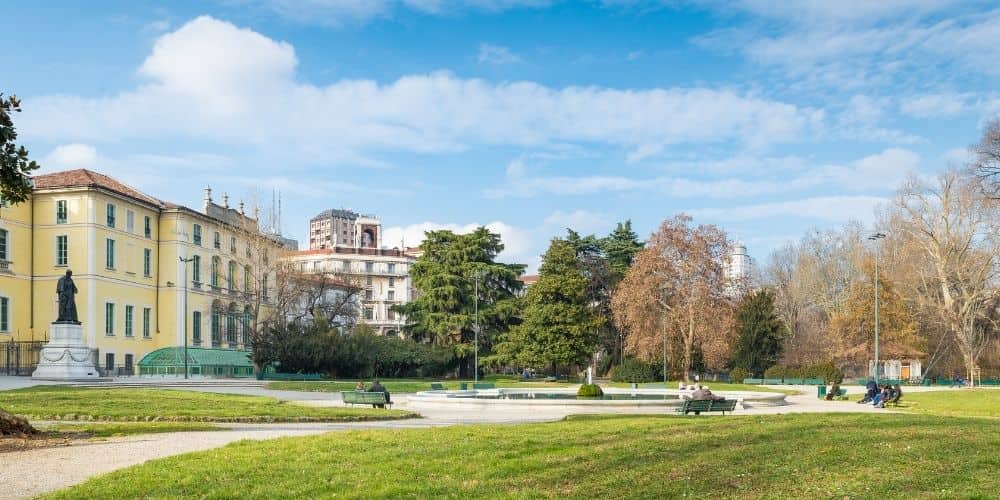
The Indro Montanelli Public Gardens, dedicated to the famous journalist who used to spend his free time here, are an ideal location to relax walking along the tidy paths and to observe the foliage in autumn among the redwoods, cedars and horse chestnuts. The park looks like an English garden where you can discover small botanical and architectural gems before diving into the famous Corso Buenos Aires, one of Milan's pulsating arteries. Here you will find many clothing stores for all budgets as well as several hotels and restaurants.
Via Palestro, 14
1. Basilica of Sant'Eustorgio, a hidden jewel
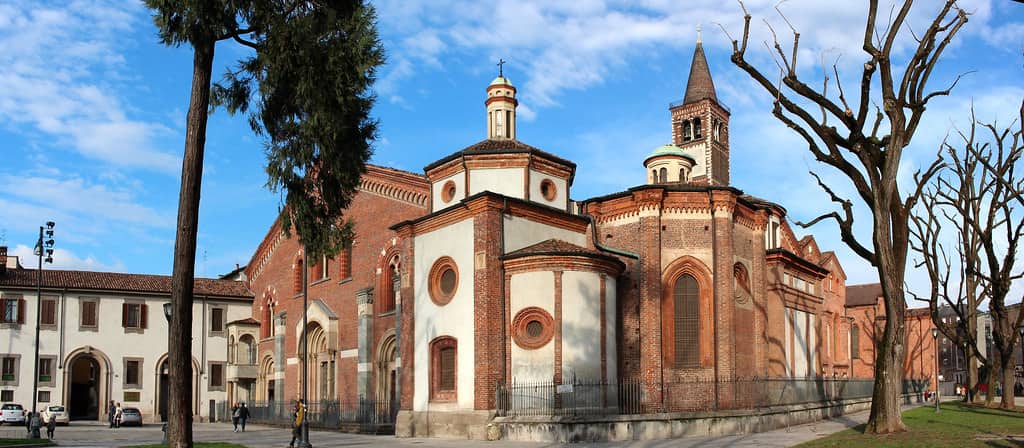
In the Porta Ticinese area there is the Basilica of Sant'Eustorgio, a late Roman imperial building. According to tradition still today, here it begins the procession with which every new bishop of Milan enters the city. According to the myth, the Basilica of Sant'Eustorgio held the relics of the Three Kings which were stolen and taken to Cologne by Frederick Barbarossa, today only a few fragments remain in the niche above the altar.
Piazza Sant'Eustorgio, 1
About the author
Written on

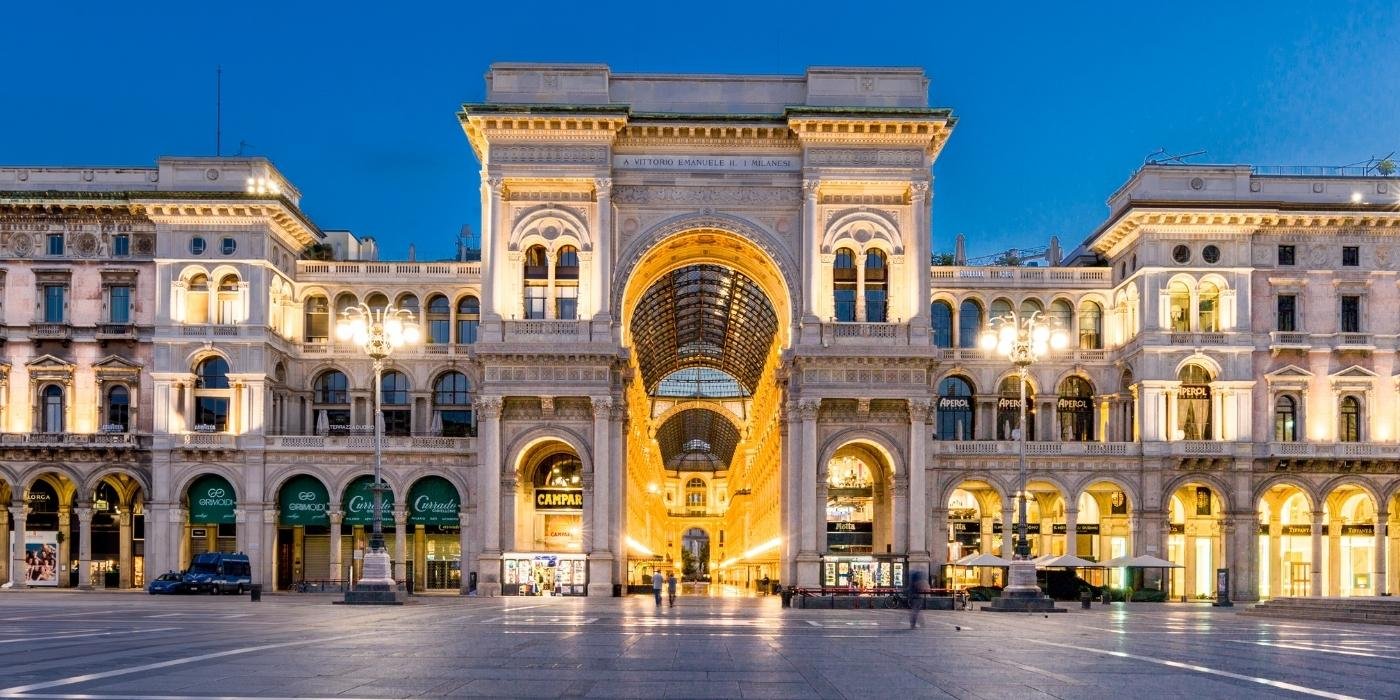

Gloria Venturini
Milan offers tourists an incredible variety of artistic attractions, leisure activities, fashion, and the chance to explore the neighbourhood in Italy